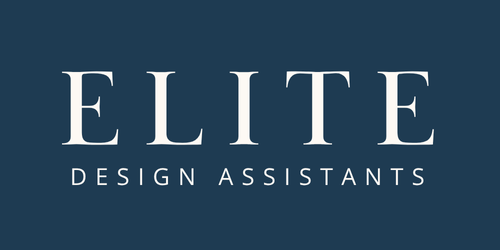9 Ways to Make Your Interior Design Portfolio Shine
/As an interior designer, your portfolio is your most valuable marketing tool. It showcases your skills, creativity, and professionalism to potential clients and collaborators. But merely having a portfolio is not enough. You need to make it shine and speak for itself. Here are nine ways to achieve that:
1. Curate your projects carefully. You don't have to include everything you have done in your portfolio. Choose the projects that best represent your style, strengths, and diversity. Ideally, you should have at least five to ten projects with photos that tell a story and show the process and outcome of your design. Make sure that your portfolio reflects your target audience and niche.
2. Invest in quality photography. Your portfolio is only as good as your photos. Therefore, it's best to hire a professional photographer or otherwise learn how to take good photos yourself. Make sure that your photos are well-lit, well-composed, and in focus. Avoid using filters, heavy editing, or low-resolution images. You want your photos to be realistic, accurate, and appealing.
3. Use a clean layout. Your portfolio should be visually pleasing and easy to navigate. Use a layout that accentuates your photos and lets them breathe. Avoid clutter, too many fonts, different colors, or graphics. Use plenty of white space, grids, or templates to organize your projects. Adobe Illustrator and Canva are great tools and offer templates, or you can purchase one on Etsy. Make sure that your portfolio is mobile-friendly, accessible, and optimized for SEO.
4. Create in multiple formats. To ensure that your work reaches a wider audience, it's a good idea to have your portfolio available in various formats. While your website and social media profiles can serve as a digital portfolio, consider expanding your options with formats such as a printable PDF. Another alternative is creating a corporate video that provides a glimpse of your team and some of your notable projects. For those with an extensive collection of projects, a bookazine may also be a great way to showcase your work in a tactile and visually appealing format.
5. Use a consistent brand identity. It's crucial to have a consistent appearance across all of your marketing materials, including your portfolio, website, and social media profiles. This includes using the same text fonts throughout to maintain a cohesive look and feel. By having a strong brand identity kit, you create a sense of professionalism and reliability. Consult a graphic designer for help putting together an attractive and complete kit.
6. Tell a story with your projects. Your portfolio should not be just a collection of photos. It should tell a story about your design process, inspiration, challenges, and solutions. Use captions, headings, or descriptions to provide context and insights into your projects. Share your design philosophy, values, and goals. Show your potential clients why you are different and why they should hire you. Just keep in mind that the photos are the main attraction, so the text should take up minimal space.
7. Show your versatility and range. Your portfolio should include projects that demonstrate your ability to work with different styles, spaces, budgets, and clients. Show your creativity, innovation, and problem-solving skills. Highlight your strengths and unique selling points. Be proud of your accomplishments and don't be afraid to show them off.
8. Only use your own photos. If you don't have many completed project photos yet, you can still showcase your skills, creativity, and vision by creating concept designs, mood boards, or sketches of your dream projects. 3D renders can also be an excellent substitute until you have more photos. Collaborating with other designers, photographers, or artists to create joint projects or mock-ups is another option to demonstrate your abilities. That being said, many interior designers like to share other designers’ work on social media as another way of showing what inspires them, but always giving due credit.
9. Include your contact information and a call to action. Your portfolio should also be a marketing tool that encourages potential clients to contact you. Therefore, make sure that your portfolio includes your contact information, such as your email, phone number, website, or social media. Make it easy for clients to reach you and learn more about your services. Also, include a call to action, such as "Schedule a consultation," "Get a quote," or "Learn more." Encourage your viewers to take action and engage with you.
Your portfolio is a representation of your design business and should reflect your brand, style, and professionalism. It is, in essence, your virtual showroom, and should capture the attention of potential clients and collaborators, making them excited to work with you. So, dedicate the time, effort, and resources that it takes to make your portfolio shine.
xx, Danae










